Monday morning arrives with three urgent customer emails asking for the latest training materials, a notification that a customer’s main point of contact is leaving the company, and a request from your manager for adoption metrics across your accounts.
For customer success managers (CSMs), this scenario triggers a frantic scramble across multiple platforms, folders, and communication channels. But what if you could tackle all these requests from a single platform?
That’s exactly what CSMs are doing with Bigtincan.
We spoke to Steve Hendricks, our VP of global customer success, to learn more about the ways in which his team uses Bigtincan to deliver exceptional customer experiences.
1. Use DSRs as your customer collaboration hub
The constant back-and-forth of email attachments creates confusion, outdated information, and wasted time. Instead of sending individual files that get buried in inboxes, experienced CSMs create Digital Sales Rooms (DSRs) for each customer.
“I’ve transitioned from using emails to using Digital Sales Rooms quite a bit,” says Hendricks. “I basically have a page of resources for my customer. They don’t have to keep looking through emails to find what I sent them, and I can easily add team members to that so customers have the same information.”
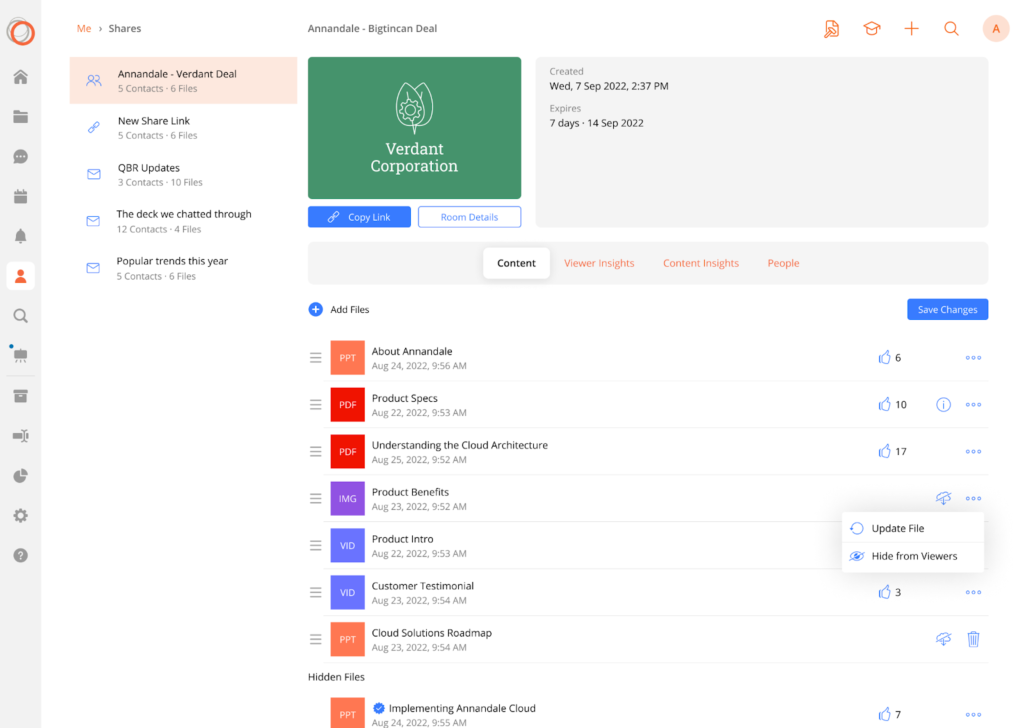
How you can use it:
- Create a DSR for each of your key accounts
- Organize resources in logical sections (Getting Started, Training, Best Practices, etc.)
- Add all relevant stakeholders at the customer organization
- Use the notification options to alert customers when new content is added
2. Use the Salesforce integration to track customer engagement
When customer interactions happen across multiple platforms, important details fall through the cracks. And when key accounts get handed over to your CS team, you want to make sure you’re continuing the story your sales team has built.
Bigtincan’s Salesforce integration automatically logs all your customer interactions and content sharing.
“Anytime I share information, whether it’s an email or a room, I don’t use links very often, but there’s an ability to log it to an opportunity,” explains Hendricks. “It automatically gets logged that I’ve sent all this information. And when the customer opens any of that content, that also gets written as a record against the opportunity and their contact.”

How to do it:
- When sharing content with customers, use the Salesforce logging option
- Select the appropriate opportunity or contact record
- Monitor open rates and engagement directly in Salesforce
- Use these insights to follow up on resources customers haven’t viewed
As a result, you don’t have to worry about logging every interaction in Salesforce — and you have access to the full picture at all times. When it’s time to upsell or cross-sell across your portfolio, everything is logged in.
3. Create Bookmark Stacks for presentation-ready content
You don’t want to wade through fifteen presentations to find the right one for each training session. But if you store the files on your local device, you’re out of luck if you change devices.
That’s why you need Bookmark Stacks. They let you group related files and access them with a single click across all your devices.
“Bookmark Stacks are an underutilized thing,” Hendricks points out. “If I’m getting ready to present, I’m going to pull my content up — video, PowerPoint, whatever it is — and put them in the order I want. I can drag these around and then bookmark them for quick access.”
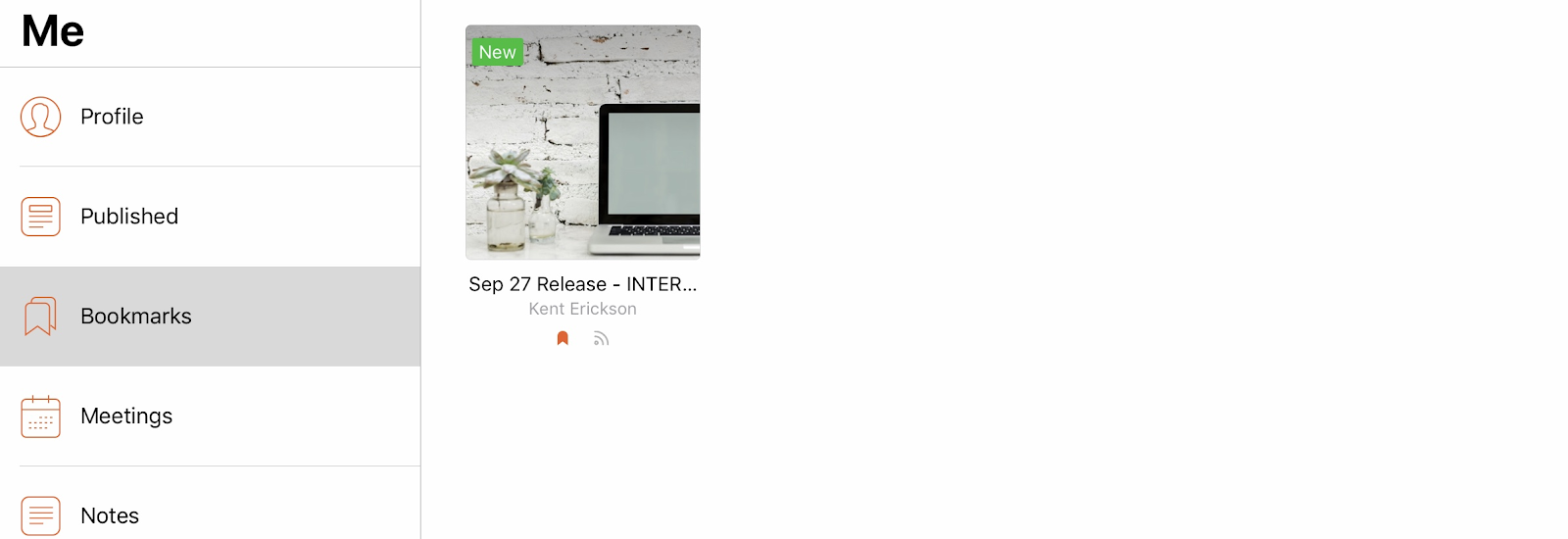
How you can use it:
- Select multiple pieces of content you frequently use together
- Click “Bookmark” and select “Create Stack”
- Name your stack for easy reference (e.g., “Quarterly Review Materials, X Feature Onboarding”)
- Access your stack from any device when you need it
4. Subscribe to content updates to be in-the-know
Your marketing team probably releases tons of content every month. Add updates and your own team’s resources to the pile, and it gets harder to keep up with everything.
The subscribe feature ensures you’re automatically notified when new content relevant to your customers is published.
“I’m subscribed to people and to specific areas of content so that I’m always up to date,” says Hendricks. “I follow specific product folks, actually even a few sales folks so that I’m paying attention to what they’re doing.”
How you can use it:
- Navigate to a specific channel, story, or user profile
- Click the “Subscribe” button at the top of the page
- Choose your notification preferences
- Review updates in your notification feed
🔥 Pro tip: Subscribe to specific pages, entire channels, or individual users’ content streams. Want to publish updates to customers? Use the “Promote” feature to keep them in the loop.
5. Use GenieAI to search and create content
Customers expect quick responses, but it’s unrealistic to know how to respond to every inquiry. So, why not use GenieAI instead? It serves as a powerful search tool and a content assistant to draft content and summarize information.
“We pretty much use GenieAI as our main search. So we’re using it every day to do things,” Hendricks explains. “It depends on the CS, but we help it craft emails or edit emails or messages I have with customers.”
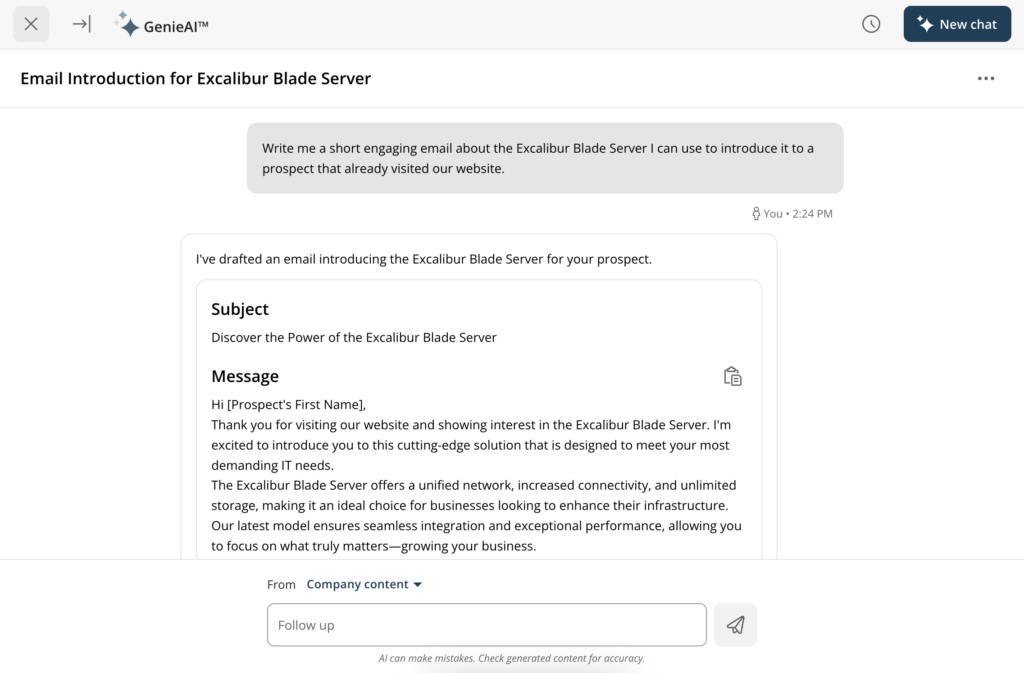
How to do it:
- Type natural language queries into Genie to find specific information
- Ask Genie to help draft customer emails based on specific topics
- Use Genie to summarize longer documents for quick customer communications
- Select “Company content” when you need internal information or “Anywhere” for broader searches
🔥 Pro tip: Use GenieAI to build custom content or tools for specific needs. For instance, Hendricks developed a feature using GenieAI that generates a competitive comparison table any time you ask it a question. The table always recommends the customer’s product as the top choice, making it a valuable tool for sales conversations.
6. Use the Flag feature to highlight outdated content
Sometimes you send a content asset to a customer only to get the feedback, “It doesn’t include information on the new update.” This problem hurts your (and your brand’s) reputation and customer satisfaction — and can even result in lost opportunities.
As GTM teams fight fires with new launches and existing content initiatives, things fall through the cracks. That’s why you need a simple way to “flag” outdated content.
“In Bigtincan, there’s an underutilized feature called flagging,” Hendricks points out. “If you click the Flag feature, you can say, ‘Something’s wrong. Please update.’”
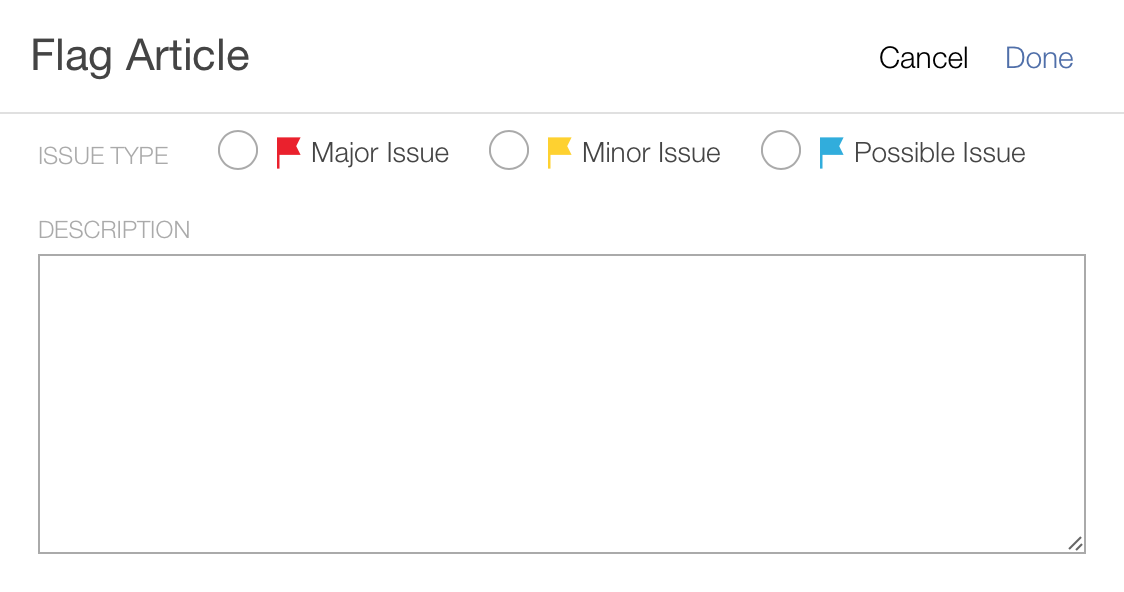
How you can use it:
- Navigate to content that needs updating
- Click the flag icon
- Select the appropriate reason (out of date, needs updating, etc.)
- Add any additional comments for the content creator
7. Use analytics to understand customer behavior
You’re probably pushing quite a bit of content in the initial stages of the onboarding process. As useful as it is, customers don’t always open it or engage fully.
You’ll see signs of this during training or 1:1 sessions with them. To avoid this in the future, dig up your content analytics and get ahead of the problem.
“I use analytics to understand adoption and trends,” says Hendricks. “It’s also helpful for marketers and enablement people.”
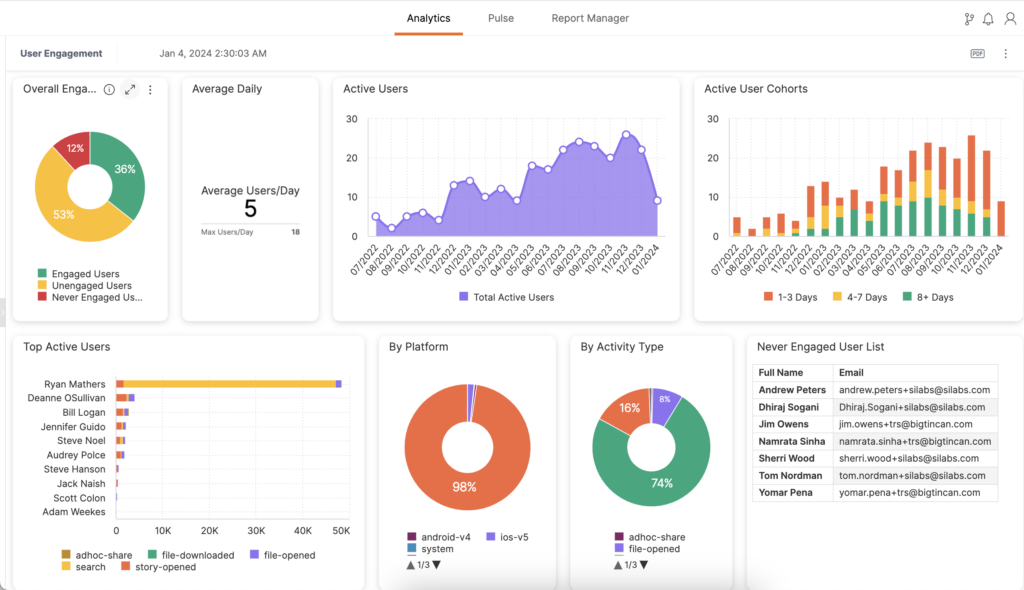
How you can use it:
- Access the Analytics dashboard for your customer’s tenant
- Review content usage patterns and trends
- Identify which resources customers engage with most
- Use these insights to guide customer conversations and suggest additional resources
🔥 Pro tip: Use the analytics feature to see which assets need more engagement — especially if they’re important for the intended use case. Based on that data, set up reminders using the “Promote” feature to increase content adoption.
Use Bigtincan to deliver better customer experiences
The biggest benefit of using Bigtincan is that you save time and effort on grunt work — while helping you improve customer experiences across multiple accounts.
You’re responsible for setting up an effective CS operation for each customer and the only way to do that is to centralize information in one place. Don’t treat your daily workflow as a broken system spread across disparate devices and tools.
Instead, take full advantage of a single platform with all the features you need to do better in your role.
If you want to explore more ideas or see how Bigtincan works, get in touch with us.
